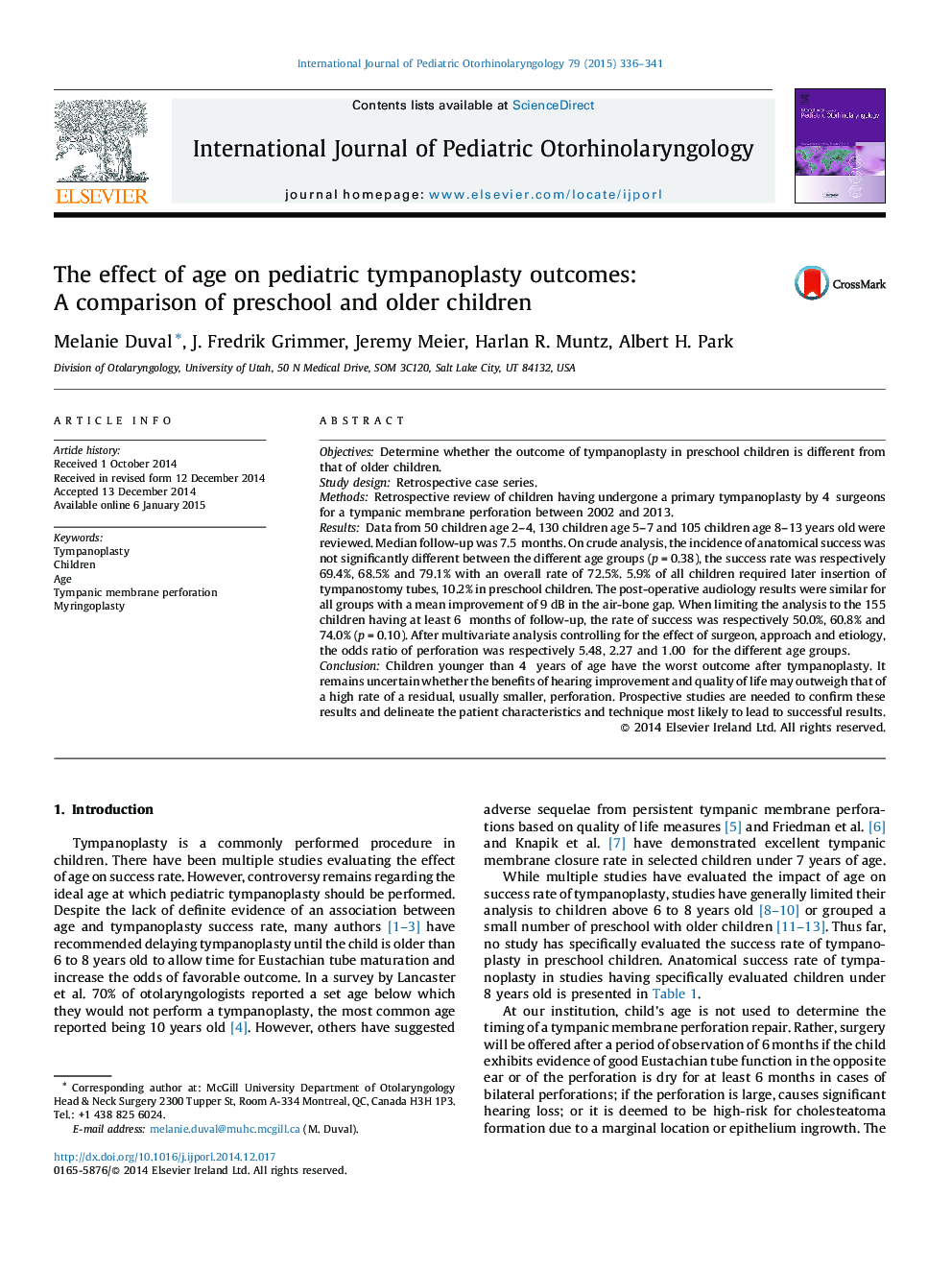| Article ID | Journal | Published Year | Pages | File Type |
|---|---|---|---|---|
| 4111965 | International Journal of Pediatric Otorhinolaryngology | 2015 | 6 Pages |
ObjectivesDetermine whether the outcome of tympanoplasty in preschool children is different from that of older children.Study designRetrospective case series.MethodsRetrospective review of children having undergone a primary tympanoplasty by 4 surgeons for a tympanic membrane perforation between 2002 and 2013.ResultsData from 50 children age 2–4, 130 children age 5–7 and 105 children age 8–13 years old were reviewed. Median follow-up was 7.5 months. On crude analysis, the incidence of anatomical success was not significantly different between the different age groups (p = 0.38), the success rate was respectively 69.4%, 68.5% and 79.1% with an overall rate of 72.5%. 5.9% of all children required later insertion of tympanostomy tubes, 10.2% in preschool children. The post-operative audiology results were similar for all groups with a mean improvement of 9 dB in the air-bone gap. When limiting the analysis to the 155 children having at least 6 months of follow-up, the rate of success was respectively 50.0%, 60.8% and 74.0% (p = 0.10). After multivariate analysis controlling for the effect of surgeon, approach and etiology, the odds ratio of perforation was respectively 5.48, 2.27 and 1.00 for the different age groups.ConclusionChildren younger than 4 years of age have the worst outcome after tympanoplasty. It remains uncertain whether the benefits of hearing improvement and quality of life may outweigh that of a high rate of a residual, usually smaller, perforation. Prospective studies are needed to confirm these results and delineate the patient characteristics and technique most likely to lead to successful results.
